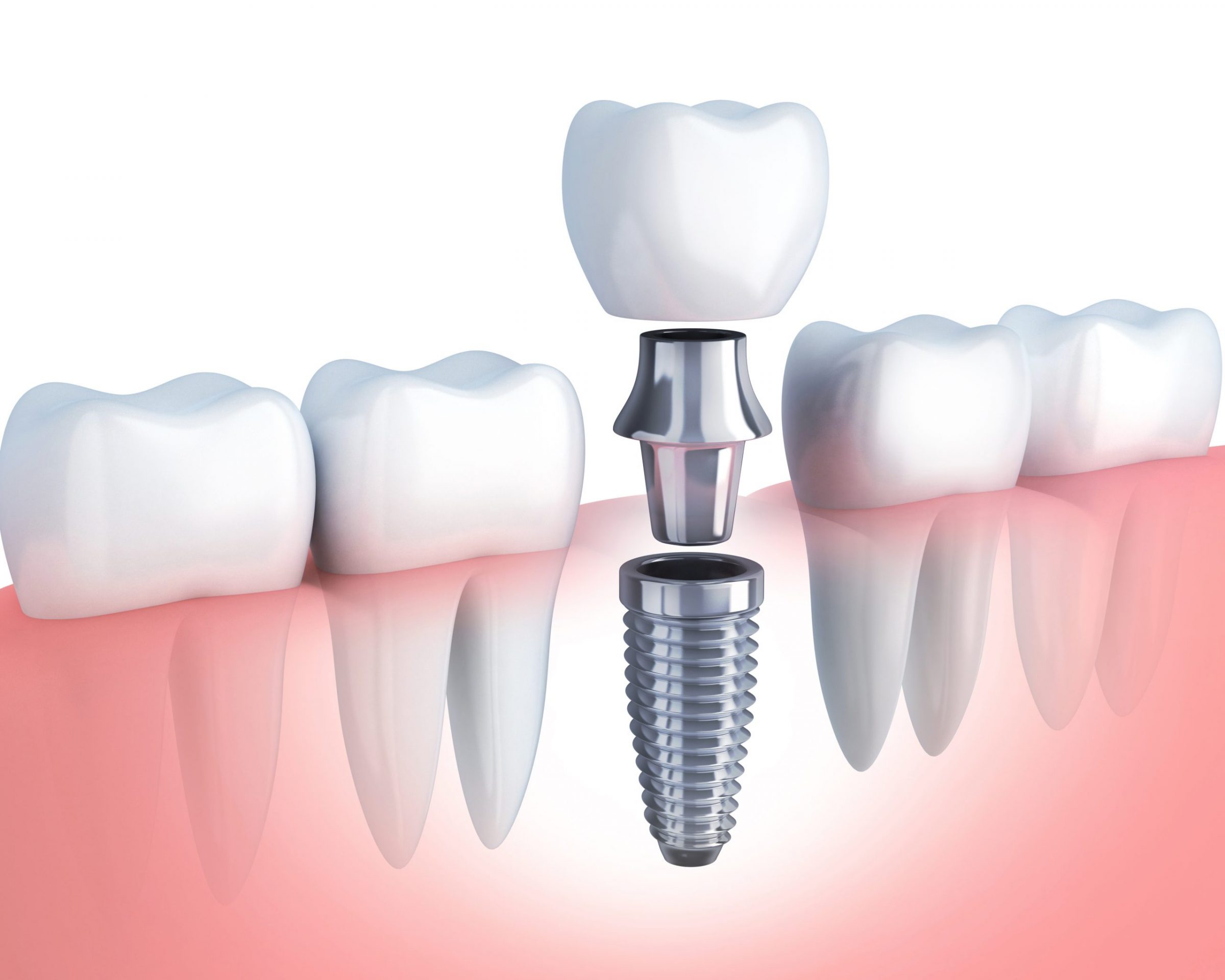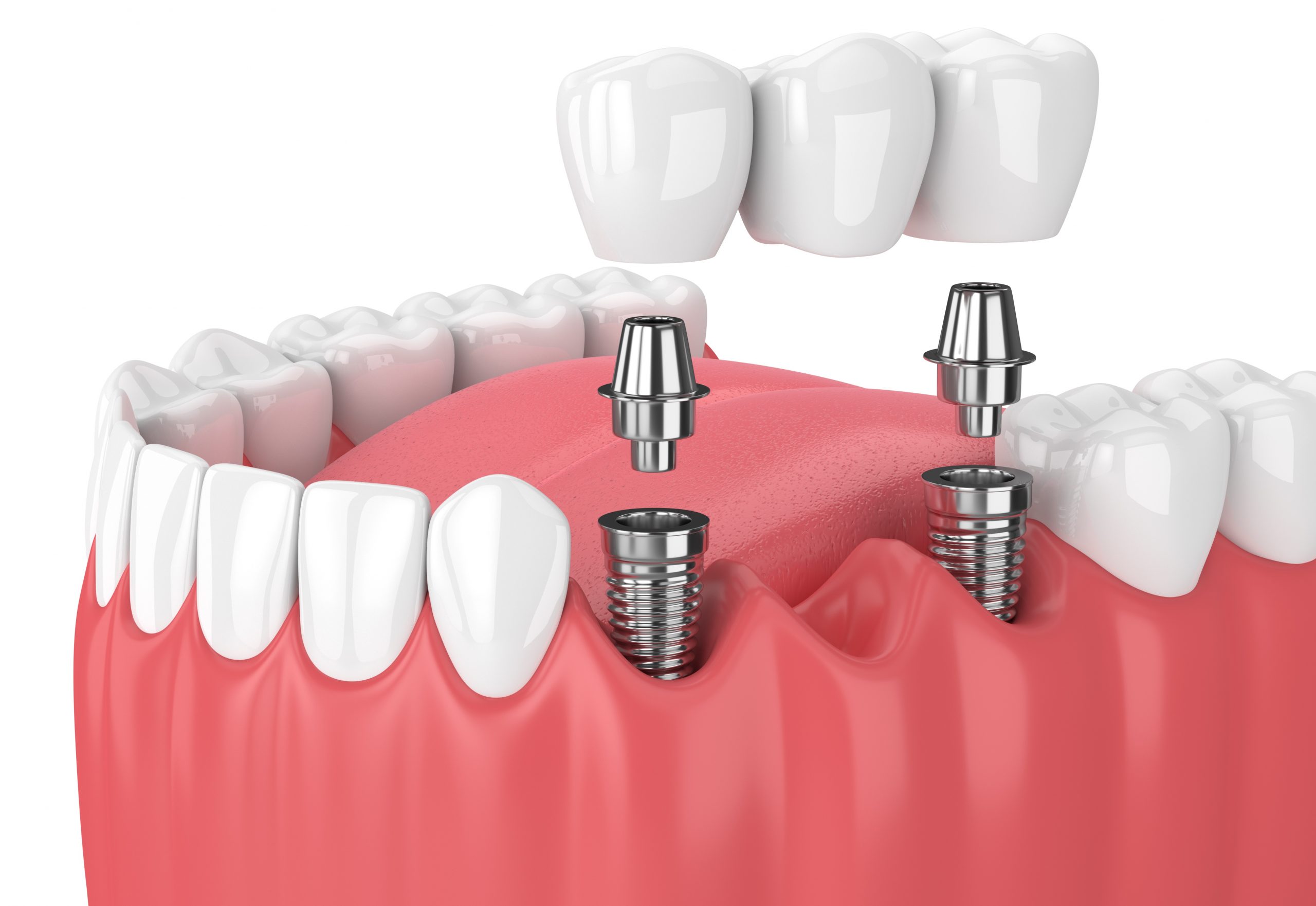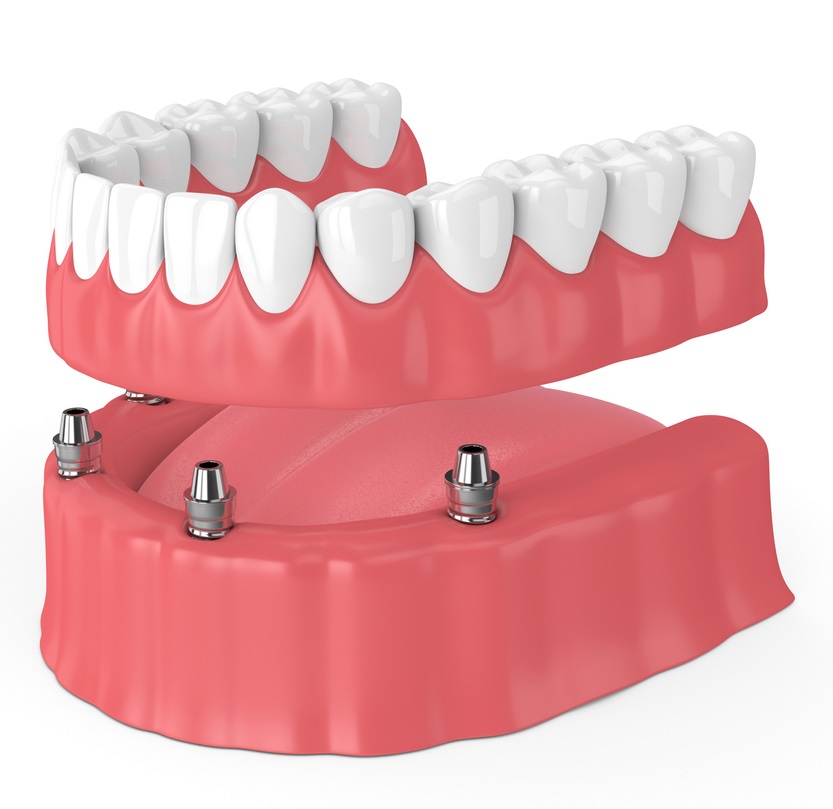Implants are the best solution for simulating the look, feel, and function of natural teeth. Dental implants do much more than replace missing teeth. They help maintain and strengthen bone structure, provide the ability to chew healthy food, and give patients the confidence to smile. They also protect existing teeth by helping to preserve bone structure.
Once a tooth is lost, several things begin to happen that are not immediately noticeable to a patient and which can have a significant negative effect on both health and appearance. Tooth roots help hold teeth in place, but they are also critical in maintaining health in the surrounding gums and supporting bone structures. Bone loss in the jawbone is one significant problem that naturally occurs once a tooth is lost. This bone loss can compromise the integrity of neighboring tooth roots and tooth stability, and it is also a large part of what causes the “sunken” look that is seen in people who have lost several or all of their teeth. It is the reason patients who wear dentures find that over time their dentures are harder and harder to fit and keep in place.
Dental implant placement can help generate bone growth in the area around the implant, which not only strengthens the bone and builds support, but can also alleviate the sunken look that can occur with bone loss in the jaw. This process is known as osseointegration and is a significant benefit of implant placement because it can also help prevent future bone loss.
Although having a beautiful smile and the confidence that comes with it are important, there are also important health reasons to have dental implants. Whether replacing one tooth or several, implants are an important solution to restoring and maintaining dental health.

Dental implants replace tooth roots in the mouth. Implants provide a strong foundation for fixed or removable replacement teeth and can aid in the prevention of bone loss in the jaw.
Dental implants are small anchors made of a biocompatible metal called titanium that are placed in the jawbone. Once placed, the anchors begin to fuse with the bone over the course of a few months. After the fusing process, known as osseointegration, abutment posts are inserted into the anchors to allow for the permanent attachment of the replacement teeth.
An implant supported bridge is a restorative solution for spaces where three or more adjacent teeth are missing. This restoration typically requires two implants to support the porcelain bridge. The bridge provides a functional and aesthetic replacement for a patient’s natural teeth.
Because of the natural look and feel of the porcelain and the functional stability provided by the implants, implant supported bridges are an effective solution to replace multiple missing teeth. An implant supported bridge is secured to two or more dental implants rather than relying on the adjacent natural teeth for support. When a bridge uses natural teeth for attachment, the teeth must be prepared (shaved down) for crowns. Once the bridge is placed, the natural teeth will be subjected to increased stress that can be damaging – particularly if the existing tooth, roots or surrounding bone structure are already compromised.

For patients who are missing many or all of their teeth, implant supported dentures may be an alternative to traditional dentures. This solution requires the placement of two or more implants. In order to replace a full arch denture, a minimum of four implants is generally recommended. Eligibility for this solution is dependent upon a number of factors, with jaw bone density being one of the most significant determining factors.
Traditional dentures rely on an acrylic base that sits directly on the gums, held in place by a paste or adhesive. Using implants as supports for dentures allows for a smaller and more comfortable base and less shifting of the prosthesis during use.
Implants can support both full and partial dentures as well as both fixed and removable dentures. If a removable denture is selected, the denture will “snap” on to the implant rather than requiring the use of denture paste or adhesives. Removable dentures can be taken out for cleaning at night.
Easy to care for, this solution can simulate the look and feel of natural teeth and stay fixed in place with the implants acting as anchors. Patients will not experience the typical rocking and movement or gum irritation associated with dentures.
Dental implant placement can also help alleviate the sunken look that can occur with bone loss in the jaw by stimulating bone growth in the area around the implant. This process is called osseointegration and can also help prevent future bone loss.

This procedure is a unique implant solution that allows patients with a completely edentulous (toothless) upper or lower arch to replace all of the teeth in that arch using only four implants as anchors.
There are times when a full size implant is not a viable option. In many cases, an MDI may be a great solution. Small spaces or inadequate bone mass in the jaw may prevent the use of traditional implants. Mini Dental Implants are similar to regular implants but significantly smaller in diameter.
Dental implants typically take 2 visits and require a waiting period of a few months from the time of implant placement to the time the permanent replacement tooth can be placed. The placement of MDIs is minimally invasive, often requiring only local anesthetic and no sutures. For this reason, MDIs can often be placed with the final replacement tooth in one day.
In traditional implants, an abutment is attached to the titanium implant screw. The restoration is then placed on the abutment. MDIs are approximately half the diameter of a traditional implant and use a titanium post, rather than a screw. Instead of an abutment piece that supports the final restoration, MDIs use a ball and socket attachment system. The ball on the end of the titanium post provides the attachment point for the o-ring in the replacement tooth.
What are the similarities between MDIs and full size dental implants?
- The implant is inserted into the jawbone.
- The implants, once inserted into the jawbone, are fixed in place.
- The implant serves to replace the tooth root and anchor replacement teeth.
- The placement of the implant can prompt bone regeneration around the placement site.
- The implant can be used to support one or more teeth for crowns or bridges and can also help provide support for removable lower arch dentures.
When are MDIs preferable to full size dental implants?
- Bone mass in the jaw is insufficient to support a full size implant screw.
- There is a small space or gap into which to insert the fabricated tooth (such as an incisor as opposed to a molar).
- Children or young adults have congenitally missing teeth.
- Minimally invasive techniques are required due to health or other reasons.
With this technique, specialized software is used to create custom surgical guides. These guides direct the exact location, angle and depth of each implant placement. The use of the guide increases the accuracy, efficiency, safety and predictability of the procedure.
Using dental Cone-Beam Computed Tomography scans, virtual treatment planning and highly specialized training, we are able to provide guided implant placement for our patients.
Implant placements and the following restorative work can be simulated to create the ideal patient treatment plan thanks to a virtual 3D model or a physical model. These virtual plans allow the doctor to take multiple aspects of placement and restoration into consideration, resulting in optimal aesthetics, function and longevity for the patient’s final restoration. Working with a 3D model also allows the patient to better understand the procedures and to visualize the end result.
